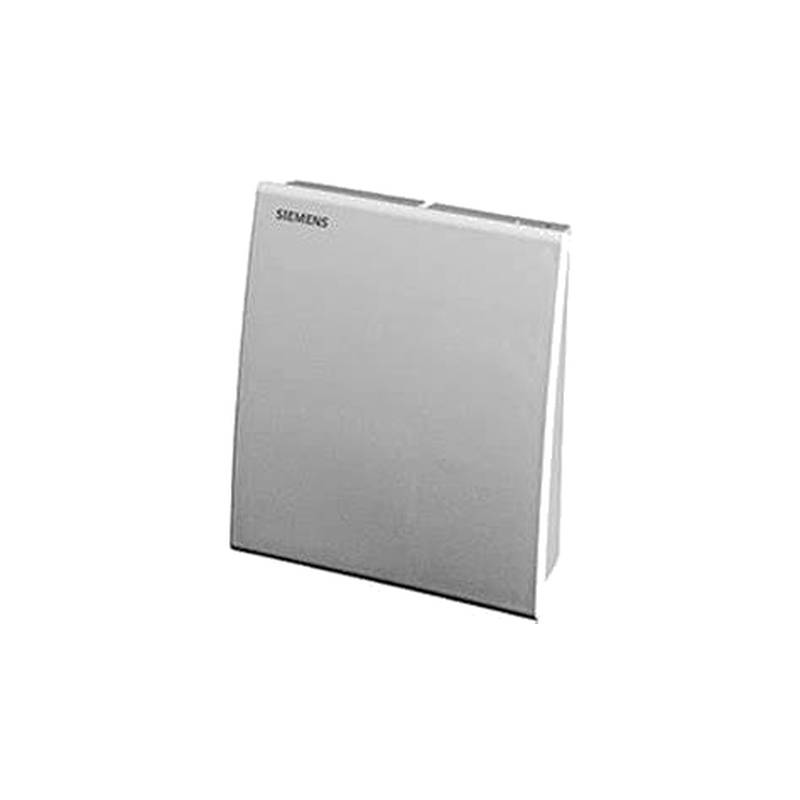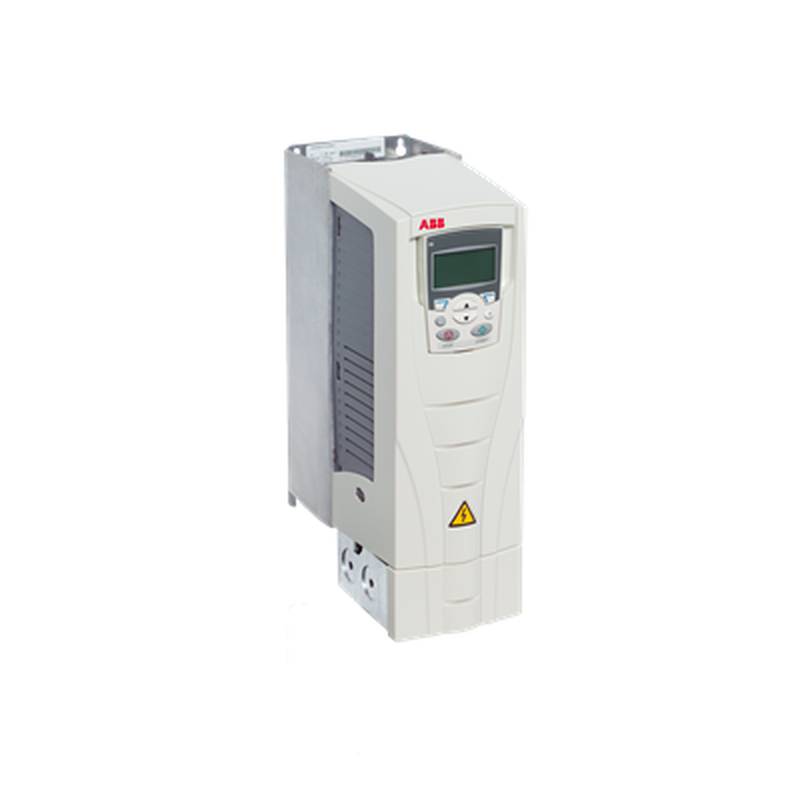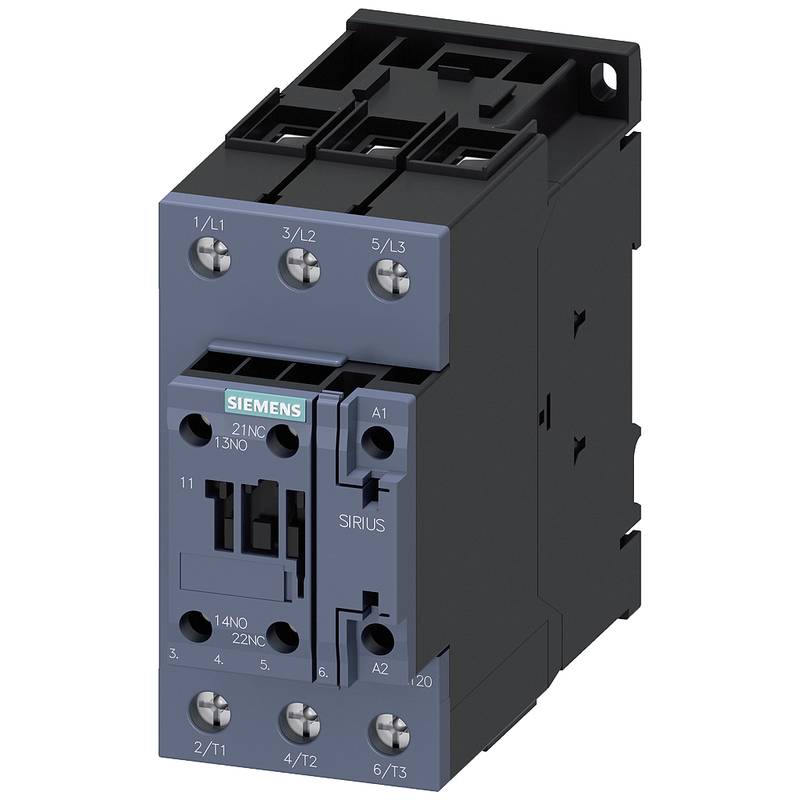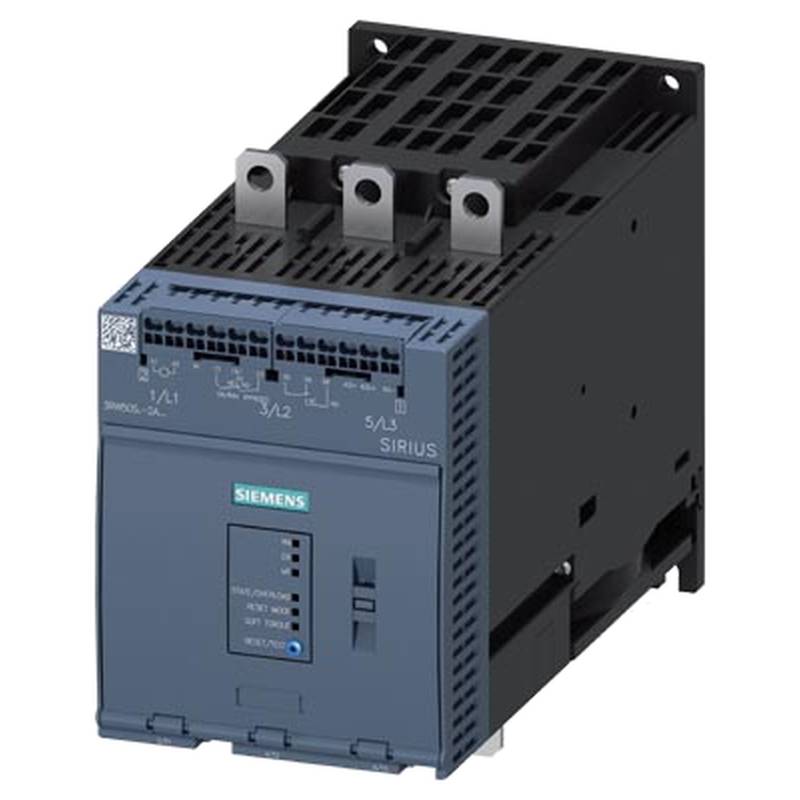
Siemens BPZ:QAA2010 Precision Pt100 Temperature Sensor: A Deep Dive into HVAC Temperature Monitoring
The Siemens BPZ:QAA2010 is a high-precision Pt100 temperature sensor engineered for reliable room temperature monitoring within HVAC systems. Its core advantages lie in its accurate measurement capabilities, robust Siemens build quality, and straightforward integration into building automation networks. Key technical parameters include a Pt100 sensing element, a measuring range of 0–50 °C, and an accuracy of ±0.6 K at 0–50 °C. The sensor features screw terminals for electrical connection and offers an IP30 degree of protection, ensuring suitability for standard indoor environments.
Product Specifications
| Specification | Value |
| :--------------------- | :---------------------------------- |
| Product Number | QAA2010 |
| Stock Number | BPZ:QAA2010 |
| Sensing Element | Pt100, inside housing |
| Temperature Range | 0–50 °C |
| Measurement Accuracy | ±0.6 K (at 0–50 °C) |
| Time Constant | 420 s |
| Electrical Connection | Screw terminals |
| Degree of Protection | IP30 |
| Dimensions (W x H x D) | 90 x 100 x 32 mm |
| Color | White (NCS S 0502-G) |
| Warranty | 60 Months |
Core Features & Market Positioning
The Siemens BPZ:QAA2010 distinguishes itself through its unwavering commitment to accuracy, a hallmark of Siemens' engineering in the building technologies sector. Positioned as a reliable and cost-effective solution for demanding HVAC applications, it leverages the industry-standard Pt100 sensing technology for precise temperature detection. This sensor is designed for straightforward integration, minimizing commissioning time and effort for system integrators. Its durability and the backing of a reputable brand like Siemens ensure long-term operational stability and performance, making it a preferred choice for building management systems focused on energy efficiency and occupant comfort.
Key Application Scenarios
The Siemens BPZ:QAA2010 is ideally suited for a wide array of applications within commercial and residential buildings where precise room temperature control is paramount. Its primary use cases include:
HVAC System Control: Directly feeding data to Building Management Systems (BMS) or direct digital control (DDC) systems to regulate heating, ventilation, and air conditioning for optimal comfort and energy efficiency. Zone Temperature Monitoring: Providing granular temperature data for individual rooms or zones, enabling tailored climate control strategies. Energy Management Systems: Contributing to overall building energy optimization by ensuring HVAC systems operate only when and where necessary, based on accurate occupancy and temperature data. Compliance and Certification: Assisting in meeting building code requirements and energy performance certifications that mandate precise environmental monitoring.
Practical System Integration Guidance
Integrating the Siemens BPZ:QAA2010 into existing systems is designed for simplicity. The sensor utilizes standard screw terminals for electrical connections, facilitating easy wiring within control panels or directly to BMS inputs. While specific programming examples depend on the target control system (e.g., Siemens Desigo, third-party PLCs), the sensor's output is a direct resistance value corresponding to temperature. Users should consult their BMS or PLC documentation for the correct configuration of analog input modules to interpret Pt100 signals. Ensuring proper cable shielding can help mitigate potential electrical interference in complex installations.
Operation and Risk Mitigation
Operating the Siemens BPZ:QAA2010 is largely maintenance-free, requiring only occasional checks for physical damage or obstruction. The primary risk in operation is related to incorrect installation or environmental factors exceeding its IP30 rating. To mitigate risks:
Installation: Ensure mounting in a location representative of the room's average temperature, away from direct heat sources or drafts. Follow standard electrical safety procedures during wiring. Environmental: Avoid installation in areas with excessive dust, moisture, or extreme temperatures outside its specified operating range. Calibration: While Pt100 sensors offer excellent stability, periodic verification against a calibrated reference thermometer can confirm ongoing accuracy, especially in critical applications. Fault codes are typically managed by the connected control system, not directly by the sensor itself.
Scalability & Long-Term Value
The Siemens BPZ:QAA2010 offers significant long-term value through its compatibility with a vast ecosystem of Siemens building automation components and open-standard protocols often used in BMS. Its Pt100 technology is a proven, long-lasting sensor type. Integration with IIoT platforms is typically achieved through the BMS or gateway device that collects data from the sensor. This ensures that the QAA2010 can contribute to smart building initiatives, enabling advanced analytics, predictive maintenance, and further energy optimization strategies as building technology evolves.
Frequently Asked Questions (FAQs)
1. What is the typical accuracy of the Siemens BPZ:QAA2010?
The Siemens BPZ:QAA2010 offers a measurement accuracy of ±0.6 K. This precision is achieved at its specified operating range of 0 to 50 °C. Such accuracy is vital for maintaining stable building environments and optimizing HVAC performance.
This level of accuracy ensures that control systems receive reliable temperature data. It minimizes deviations and supports energy-efficient operation by preventing over-conditioning of spaces. For critical applications, regular calibration can further guarantee this performance.
The inherent stability of the Pt100 sensing element contributes to this consistent accuracy over time. This reliability reduces the need for frequent recalibration, saving on maintenance costs.
2. How is the Siemens BPZ:QAA2010 installed and wired?
Installation involves mounting the sensor on a wall, ideally in a central location within the room. Wiring is done via the integrated screw terminals. Connect the two wires from the Pt100 sensor to the corresponding terminals on your control system or interface module.
Ensure proper polarity is not a concern with two-wire Pt100 sensors, simplifying the wiring process. Use appropriate gauge wiring as per your control system's specifications and local electrical codes. Always disconnect power before performing any electrical connections.
For optimal performance and to prevent interference, it is recommended to use shielded cable, especially in environments with high electromagnetic noise. Connect the shield to ground at one end, typically at the control panel.
3. What is the operating temperature range for the Siemens BPZ:QAA2010?
The Siemens BPZ:QAA2010 is designed to measure temperatures within a range of 0 to 50 degrees Celsius. This range is typical for standard indoor room environments. Exceeding these limits can affect sensor accuracy or potentially damage the device.
Operating within this specified range ensures the Pt100 element functions optimally and provides reliable data. For applications requiring measurement outside this scope, alternative Siemens sensors may be necessary. Always check the datasheet for precise environmental limitations.
It is crucial to install the sensor away from direct heat sources like radiators or vents, and not in areas subject to extreme fluctuations. This placement guarantees accurate readings representative of the actual room condition.
4. Can the Siemens BPZ:QAA2010 be used in outdoor or industrial environments?
The Siemens BPZ:QAA2010 has an IP30 degree of protection, which is suitable for clean indoor environments. It is not designed for exposure to moisture, dust, or harsh industrial conditions. For such applications, Siemens offers specialized sensors with higher IP ratings.
Outdoor or industrial use would require sensors with enhanced protection against ingress of solids and liquids. These environments often necessitate more robust housings and wider temperature ranges than the QAA2010 provides.
Utilizing the QAA2010 outside its intended application can lead to premature failure, inaccurate readings, and void the product warranty. Always select a sensor appropriate for the specific environmental demands of the installation.
5. What is a Pt100 sensor and why is it used in the QAA2010?
A Pt100 sensor is a type of resistance thermometer that uses platinum as the sensing element. "Pt" is the chemical symbol for platinum, and "100" refers to its resistance in ohms at 0 °C. As temperature changes, the platinum's resistance changes predictably.
Pt100 sensors are favored for their accuracy, stability, and wide temperature range compared to thermocouples or thermistors. This makes them ideal for precise measurement applications like those in HVAC control systems. The Siemens BPZ:QAA2010 leverages this for reliable room temperature detection.
The linear relationship between temperature and resistance in Pt100 elements simplifies signal processing in control systems. This inherent stability ensures long-term reliable performance without significant drift.
6. How does the time constant affect the QAA2010's performance?
The time constant of the Siemens BPZ:QAA2010 is 420 seconds. This value indicates how quickly the sensor responds to temperature changes. A longer time constant means a slower response.
This specific time constant is suitable for typical room temperature monitoring, where rapid fluctuations are less common. It helps to smooth out minor, transient temperature variations, providing a more stable reading to the control system.
For applications requiring very fast temperature response, a sensor with a shorter time constant would be necessary. However, for standard HVAC applications, this value ensures adequate responsiveness without overreacting to brief disturbances.
7. What is the warranty period for the Siemens BPZ:QAA2010?
The Siemens BPZ:QAA2010 comes with a comprehensive 60-month warranty. This extended warranty period underscores Siemens' confidence in the product's durability and reliable performance. It provides end-users with significant peace of mind.
This warranty covers manufacturing defects and ensures the sensor will function as specified for five years from the purchase date. It is essential to retain proof of purchase for any warranty claims.
Always refer to the specific warranty terms and conditions provided by the supplier or Siemens for complete details regarding coverage and claim procedures. Proper installation and adherence to operating guidelines are typically required for warranty validity.
8. How do I integrate the QAA2010 with a Siemens S7 PLC or other control systems?
Integration with Siemens S7 PLCs typically involves connecting the sensor to an appropriate analog input module (e.g., one supporting RTD/Pt100 inputs). In the PLC programming software (like TIA Portal), you will configure the module to recognize a 2-wire Pt100 sensor and define the input scaling for the 0–50 °C range.
For other control systems, the principle is similar: connect the sensor to a compatible analog input that accepts resistance signals. The system's configuration software will then be used to interpret the resistance readings as temperature values based on the Pt100 standard.
Always consult the documentation for your specific PLC or control system for detailed wiring diagrams and configuration instructions. Ensure the input module can handle the resistance range of a Pt100 sensor.
9. What does "BPZ:QAA2010" signify in the product naming?
"BPZ" often serves as a prefix or stock keeping unit (SKU) identifier used by distributors or Siemens' internal logistics to denote a specific product variant or packaging. The core product identifier remains "QAA2010," which is the Siemens model number for this particular room temperature sensor.
This prefix helps in tracking inventory and ordering specific items through distribution channels. While it's part of the part number for procurement, the technical specifications and functionality are defined by the "QAA2010" designation.
When ordering or referencing the sensor, using the full "BPZ:QAA2010" ensures you receive the exact item intended by the supplier or your project specifications. It's common practice in industrial component distribution.
10. Are there any common troubleshooting issues with the Siemens BPZ:QAA2010?
Common issues typically arise from installation rather than sensor failure. Incorrect wiring, loose connections, or environmental factors (like extreme temperature or moisture beyond IP30) are primary culprits. Readings that are consistently too high, too low, or absent usually point to these external factors.
If the sensor appears faulty, first re-verify all wiring connections at both the sensor and the control system. Check for physical damage to the sensor or its wiring. Ensure the input module on the controller is correctly configured for a Pt100 sensor.
For persistent issues, consider testing the sensor's resistance directly with a multimeter at room temperature to confirm it is within expected parameters (around 100 ohms at 0°C, increasing with temperature). If the sensor shows no resistance or an open circuit, it may require replacement.

























